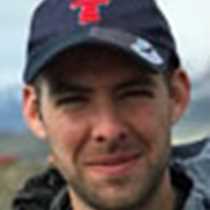Our third day in Iceland brought us into the past with visits to Siglufjördur and Akureyri. Siglufjördur, a treasured locality along Iceland’s northern coast, was our first up-close encounter with Iceland’s rich fishing history. A unique feature of Siglufjördur is its impressive system of museums highlighting the country’s tradition of herring fishing.
Atlantic herring (Clupea harengus) are migratory forage fish that swim to the waters of Iceland. A century ago, enterprising Norwegians partnered with Icelanders to develop a robust herring fishery and export economy, which exploded in the small town of Siglufjördur. Today, the herring fishery has declined, but what remains in Siglufjördur is an award-winning museum highlighting the industry’s storied history. Vital to this history is the role that women played in the development of this part of Iceland’s economy. We experienced firsthand the herring girls carrying out their hard work plus a performance of Icelandic folk music, fellowship, and dancing.
Following our travel back in time, we continued on our journey northeastward, toward Iceland’s second largest city of Akureyri. Along the way, we sailed deep into a protected fjord, passing by stunning, bucolic farmlands and steep fjord walls. As we arrived in Akureyri, we were confronted by a sharp contrast—this place seemed unlike any other in Iceland. Akureyri also features a rich history and a sprawling city center. Within the town limits can be found an unusual treasure for our plant lovers—the Botanic Gardens of Akureyri. In the gardens, we found ourselves lost between rows and hills of flowers from all over the world. In one section, we smelled plants from alpine regions throughout the world. We later meandered through an exhibit of Iceland’s native plants. Hopping back on the shuttle, we took a short journey to the tourist church before returning to National Geographic Explorer. Back on board, we enjoyed performances by talented musicians from across Iceland—and all of the artists performing on Explorer were women, further highlighting their vital role in both the economy and the arts of Iceland.







